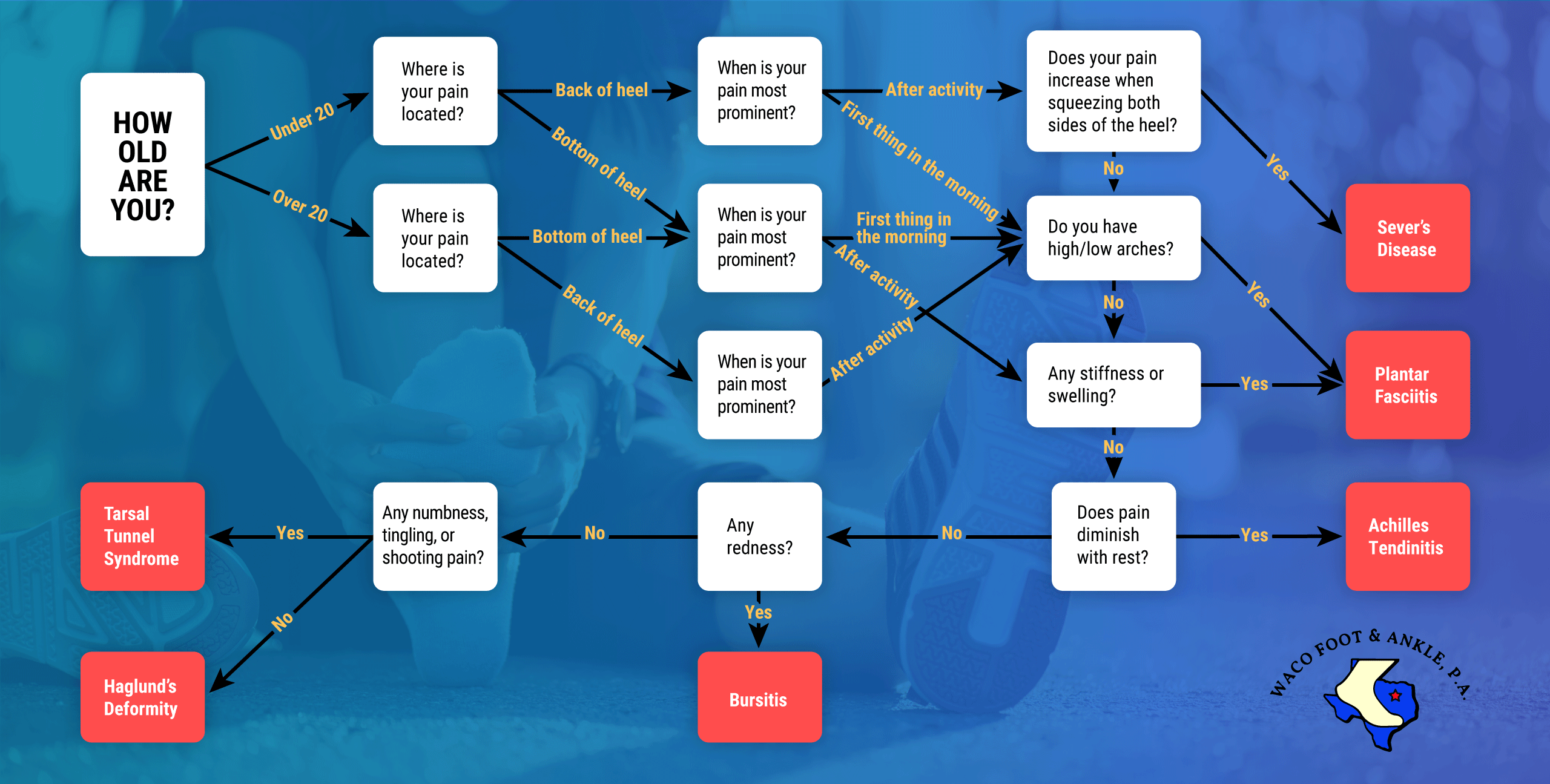What’s Wrong With My Heels?
There is no question about it – heel pain can certainly be a frustrating, annoying problem. And when this type of discomfort insists on sticking around and threatens to keep you from doing the things you love, you may begin to wonder if you should be worried.
What is causing this pain? Will it ever go away? What can I do about it?
But the truth is determining the root cause of your discomfort may not be all that simple – there are many conditions that can cause heel pain. And your best course of action will always be to come into our office so we can evaluate your situation and recommend the best treatments available to take care of your specific problem.
So don’t wait until your heel pain has become severe to get the help you need and deserve!
That said, we have some information that may help shed some light on what, in fact, is causing your heel pain while you wait for your appointment date. All you have to do is answer the questions below and see where the flow chart takes you!
Note: The chart on this page should not be used as an ultimate diagnostic tool. Though the information given here was created to be as accurate as possible, it’s still important that you come to our office for a professional evaluation and diagnosis.
What’s Wrong With My Heels?

Check Your Results:
- Achilles tendinitis. When the tendon connecting the calf to the heel becomes inflamed.
- Bursitis. When the bursae – the fluid-filled sacs that cushion joints and muscles – become irritated and swollen.
- Plantar fasciitis. When the plantar fascia – the thick band of tissue that connects the heel to the toes and supports the arch of your foot – becomes inflamed.
- Sever’s disease. When the growth plate attached to heel bone becomes inflamed due to overuse or excessive force.
- Tarsal tunnel syndrome. When the tibial nerve – located in the back on the ankle – becomes compressed or pinched in the tarsal tunnel.
- Haglund’s deformity. When a bony bump or enlargement forms on the back of the heel bone.
(Want more information on these – and other – heel pain conditions? Click here!)
What Should I Do Now?
Regardless of what results you have found, it’s important that you schedule an appointment at our office so that we can determine an accurate diagnosis – you can even bring in the information you have found in this flow chart when you come in to our office! (We would love to compare notes.)
In the meantime, however, there are certainly steps you can take to manage your pain at home and keep your condition from becoming worse as you wait for your appointment date.
Here are some things you can try:
- Perform R.I.C.E therapy (rest, icing, compression and elevation of the area several times a day)
- Take over-the-counter pain relievers, like ibuprofen
- Brace or splint the foot
- Wear your custom orthotics (if you already have a pair)
- Wear shoes that are protective and supportive
- Avoid certain activities, like high-impact exercises
Now, once you do come into our office and we are able to determine exactly what is causing your discomfort, we will then prescribe the best treatment method to get you back on your feet – without heel pain.
A treatment plan for heel pain may consist of custom orthotics therapy, physical therapy, corticosteroid injection therapy, or MLS laser therapy (among other options). And we are glad to say that surgery is rarely ever necessary to address conditions that cause heel discomfort. Only when conservative treatments are not enough to provide the relief you need, or if we determine your condition is too severe to respond to these measures, will we recommend a surgical approach.
So if you haven’t scheduled an appointment yet, please give us a call at (254) 776-6995 today. You can also take advantage of our online request form to have a member of our staff reach out to you.
